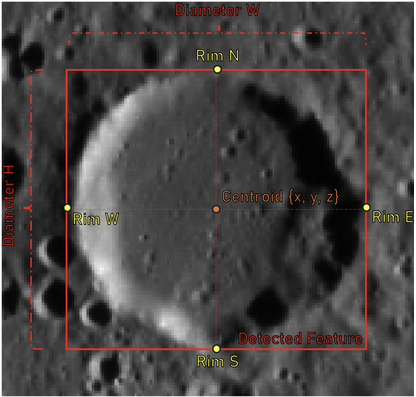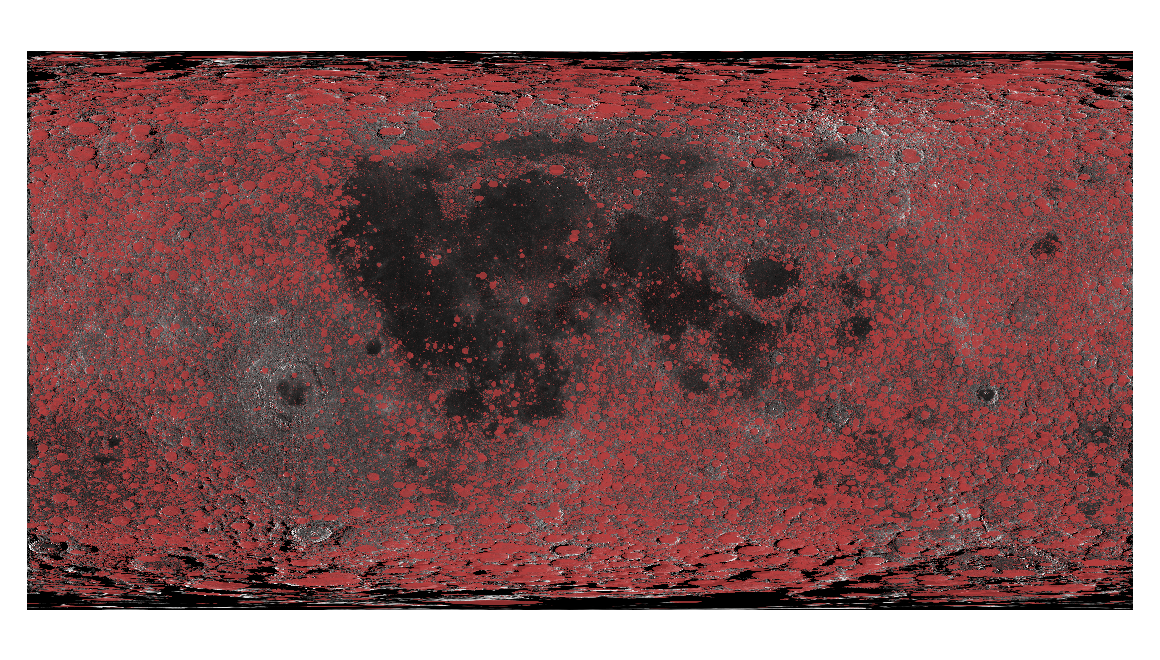From Pixels to Craters: Advancing Planetary Surface Analysis with Deep Learning.
- INAF, Italy (riccardo.lagrassa@inaf.it)
From Pixels to Craters: Advancing Planetary Surface Analysis with Deep Learning.
La Grassa, R., Martellato, E., Re, C., Tullo, A., Vergara Sassarini, N.A. and Cremonese, G.
National Institute for Astrophysics (INAF), 35100 Padua, Italy
Introduction:
Over time, space missions with dedicated instruments for remote sensing allowed us to realize more and more accurate crater catalogs. Such catalogs are important tools for surface analysis. Given impact been collected continuously with time, they permit for instance to compare the different evolution of regions. In particular, when their size-frequency distribution is evaluated in conjunction with chronological models, craters allow datation of planetary surfaces, and provide insights into its geological evolution. In addition, when available both diameter and depth values of craters, the statistical analysis of structures can also provide geomechanical properties of the surface.
In this study, we present a comprehensive catalog of lunar impact craters, augmented by advancements in deep learning technology. This catalog is the final output of an articulated workflow that includes image pre-processing steps, application of an advanced double-architected neural network model, and final nested post-processing. This catalog not only extends the spatial resolution and coverage of existing databases (e.g., [3]), but also introduces a paradigm shift by including craters as small as 0.4 km in diameter. Moreover, the methodologies developed herein pave the way for the application of similar approaches to other celestial bodies, including for instance Mercury and the Ceres dwarf planet.
Catalog Overview:
Our newly compiled catalog comprises approximately 5 million lunar impact craters (Fig. 2). Thanks to the implementation of a super-resolution algorithm, we were able to expand the lunar crater statistics down to 1 km in diameter, with nearly 69.3% of craters exhibiting diameters lower than 1 km. Furthermore, the impact craters detected in the 1-5 km and 5-100 km ranges are about 28.7% and 1.9% of the total catalog, respectively. Fig 2 shows the distribution of the extracted craters over the global basemap. The results in terms of Recall are very promising, as reported in Table 1, with performances varying with latitude.
|
|
|
Table 1: Number of tiles, Instances and Recall metric extracted by YOLOLens and different latitude degrees using Robbins Ground-Truth as main labels. |
Methodology and Validation:
Our approach exploits a custom neural network, refers as YOLOLens [1], which combines the principles of super-resolution with the state-of-the-art YOLO (You Only Look Once) object detection model [2]. This fusion of technologies enables the integration of high-resolution image processing with precise crater detection, yielding a comprehensive end-to-end solution for lunar crater cataloging. The methodologies developed for lunar crater detection are ready for adaptation and application to other celestial bodies, such as Mercury and the Ceres dwarf planet, expanding our understanding of impact cratering processes across the solar system.
To construct the YOLOLens model, we first enhanced the spatial resolution of lunar imagery, increasing the amount of detail available for crater identification. Subsequently, we integrated this enhanced imagery into the YOLO framework, allowing the localization of craters across the lunar surface. This innovative approach not only facilitated the detection of craters down to sizes as small as 0.4 km, but also ensured the accuracy and efficiency of the crater identification process.
Following the development of the YOLOLens model, extensive validation was conducted to assess its performance against established global crater catalogs. Through accurate comparisons and statistical analyses, we established a consistent crater size-frequency distribution for craters equal to or greater than 1 km, validating the efficacy of our methodology.
Elevation Data and Statistical Formulations:
One additional characteristic of our catalog is that it provides not only the crater size and position, but also the elevation of the crater rims and center, facilitating a comprehensive analysis of lunar topography (Fig. 1). Moreover, we employ statistical formulations to extract essential crater parameters depth/diameter (d/D). The depth/diameter ratio, a fundamental measure in crater studies, holds particular importance in understanding the geological processes that shaped planetary surfaces. This ratio is a key indicator of crater formation mechanisms, impact energy, and surface properties, providing invaluable insights into planetary evolution. By incorporating elevation data and rigorous statistical analyses into our catalog, we empower researchers to improve the investigations on the lunar cratering processes.
This comprehensive approach not only enhances our understanding of lunar geology but also lays the groundwork for comparative studies across different planetary bodies. As such, the opportunity to provide elevation information and crater morphometric parameters underscores the comprehensive nature of our catalog and its significance in advancing planetary science research.
|
Figure 1: schematic representation of the 4 elevation rim extract by post-processing over the Lunar DTM using the bounding box predicted by YoloLens. The d/D measure and all elevations are introduced into the final catalog. |
|
Figure 2: Overview of the global catalog LU5M812TGT of ≥0.4 km lunar craters, highlighting craters with red circles on LROC WAC Global Mosaic |
Conclusion:
Through the integration of cutting-edge deep learning techniques and validation procedures, we constructed a complete global lunar catalog that offers an important resource for the understanding of lunar geology. This catalog stands to have an interdisciplinary collaboration and technological innovation in space exploration. Additionally, adapting our methodologies to other celestial bodies can further expand our knowledge of impact cratering processes and planetary evolution beyond the Moon.
References:
[1] La Grassa, R., Cremonese, G., Gallo, I., Re, C. and Martellato, E., 2023. YOLOLens: A deep learning model based on super-resolution to enhance the crater detection of the planetary surfaces. Remote Sensing.
[2] Redmon, J., Divvala, S., Girshick, R. and Farhadi, A., 2016. You only look once: Unified, real-time object detection. Computer vision and pattern recognition.
[3] Robbins, S.J., 2019. A new global database of lunar impact craters> 1–2 km: 1. Crater locations and sizes, comparisons with published databases, and global analysis. Journal of Geophysical Research.
Acknowledgements: we gratefully acknowledge funding from the Italian Space Agency (ASI) under ASI-INAF agreement 2017-47-H.0
How to cite: La Grassa, R., Martellato, E., Re, C., Tullo, A., Amanda, V. S., and Cremonese, G.: From Pixels to Craters: Advancing Planetary Surface Analysis with Deep Learning., Europlanet Science Congress 2024, Berlin, Germany, 8–13 Sep 2024, EPSC2024-390, https://doi.org/10.5194/epsc2024-390, 2024.

